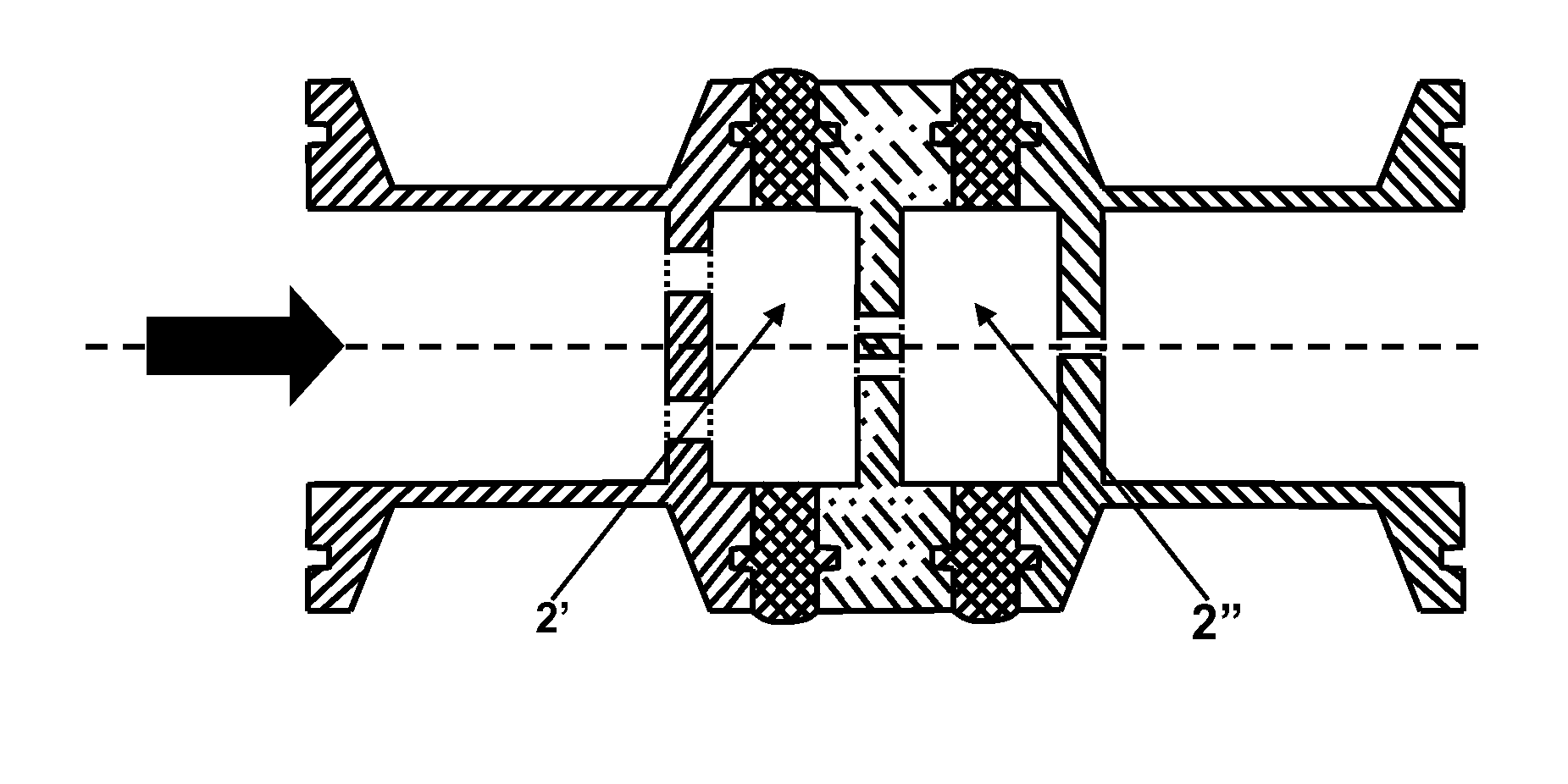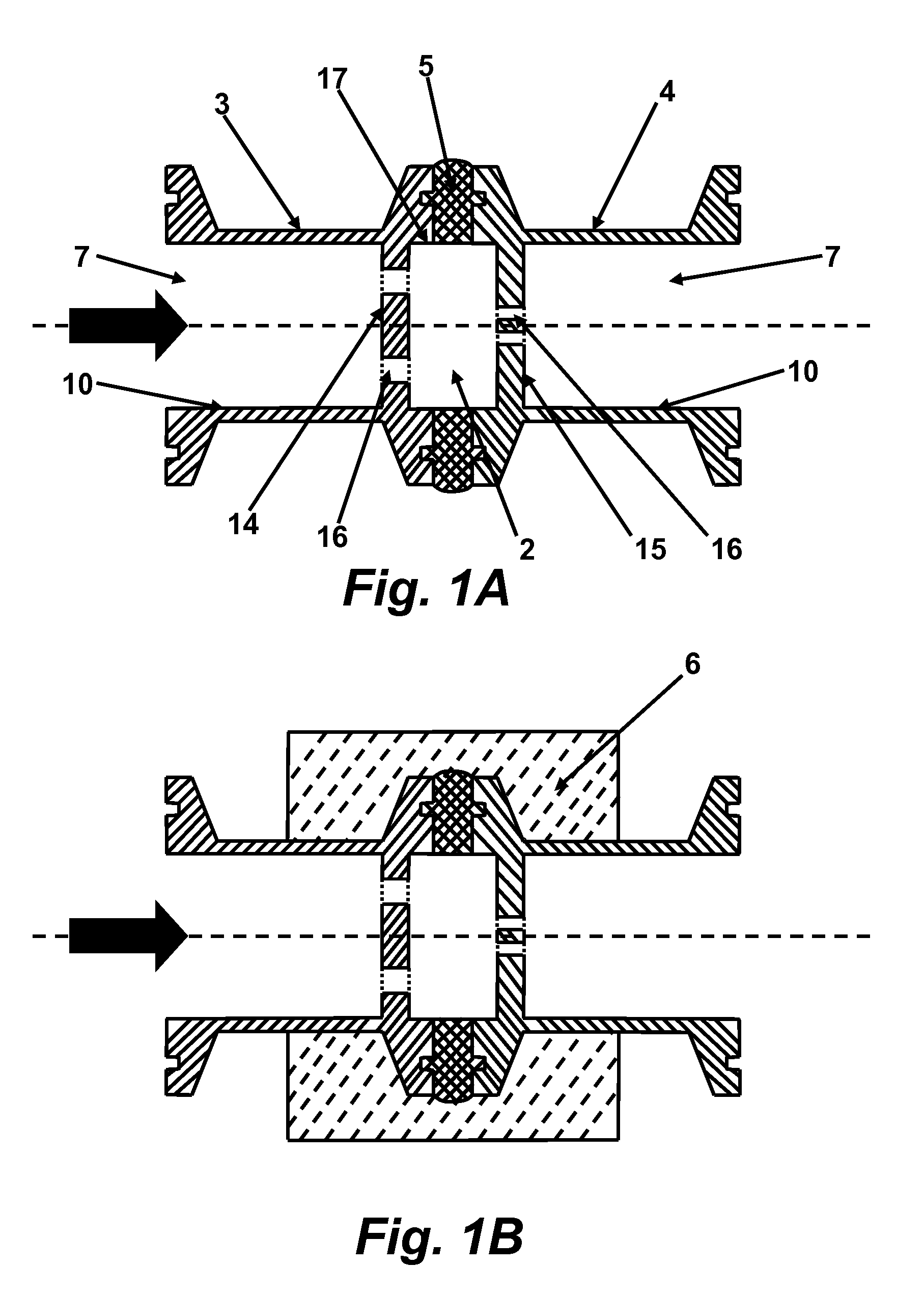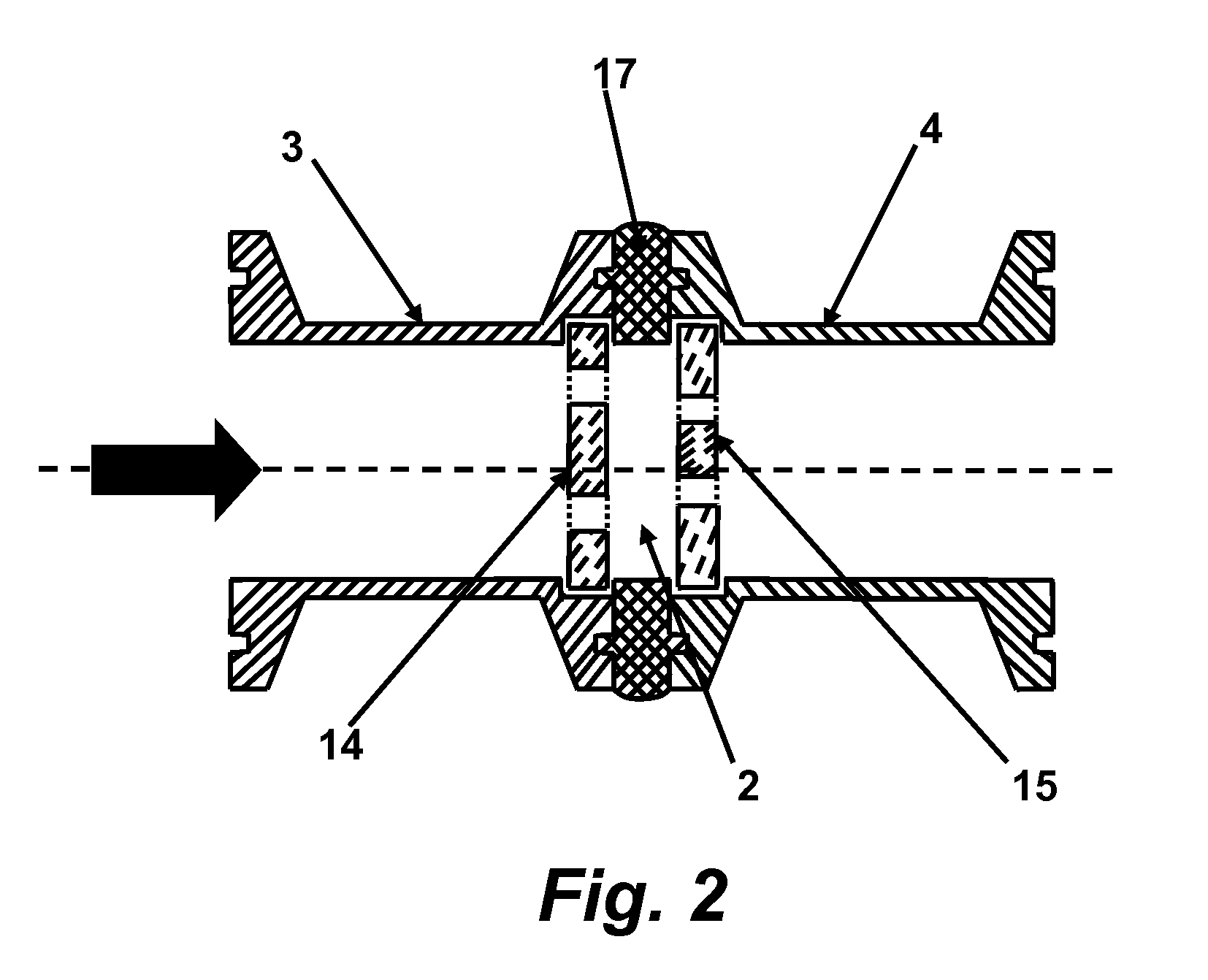Dispersion Devices For Aggregates
a technology of aggregates and dispersion devices, which is applied in the direction of gas current separation, grain treatment, biomass after-treatment, etc., can solve the problems of increasing the production of viable cells, reducing the yield of biomass production and compounds of interest, and forming cell aggregates during the cultur
- Summary
- Abstract
- Description
- Claims
- Application Information
AI Technical Summary
Benefits of technology
Problems solved by technology
Method used
Image
Examples
example 1
[0069] The preparation, propagation and infection of chicken embryo cells with Marek disease virus (MDV) were performed in 1700 cm2 rolling bottles. Infected chicken embryo cells of all the rolling bottles were dissociated by trypsination after attaining 50 to 70% CPE (cytopathic effect), then harvested by centrifugation at 500 g during 12 minutes.
[0070] After centrifugation, the supernatant was removed and freezing media was added to the pellet to obtain a cell suspension, but which contained many aggregates clearly visible to the naked eye.
[0071] For the dispersion of aggregates, two methods were used. In a first method, the cell suspension from 406 rolling bottles was homogenized by manual pipetting with a 50 ml pipette. The resulting suspension was extemporaneously filtered on a 800 μm Nylon bag, adjusted in volume with some freezing media then analyzed.
[0072] In parallel, the cell suspension equivalent of 48 rolling bottles was processed 8 times consecutively through a flow-...
example 2
[0080] Preparation, propagation and infection of chicken embryo cells with Marek disease virus (MDV) were performed in 1700 cm2 rolling bottles. Infected chicken embryo cells of all the rolling bottles were dissociated by trypsination after completion of 50 to 70% CPE (cytopathic effect), then harvested by centrifugation at 500 g during 10 minutes. Around 2300 rolling bottles were processed.
[0081] After centrifugation, the supernatant was removed and freezing media was added to the centrifugation bucket containing the pellet. The bucket was swirled by hand to obtain a coarse cell suspension, but which still contained many aggregates visible to the naked eye. The cell suspension was stirred during 10 minutes and divided equally into six containers.
[0082] One container was processed as a standard without cell splitting. The cell suspension was directly filtered on a cheese-cloth. The filtrate was furthermore diluted with freezing media before filling.
[0083] The five remaining conta...
PUM
 Login to View More
Login to View More Abstract
Description
Claims
Application Information
 Login to View More
Login to View More - R&D
- Intellectual Property
- Life Sciences
- Materials
- Tech Scout
- Unparalleled Data Quality
- Higher Quality Content
- 60% Fewer Hallucinations
Browse by: Latest US Patents, China's latest patents, Technical Efficacy Thesaurus, Application Domain, Technology Topic, Popular Technical Reports.
© 2025 PatSnap. All rights reserved.Legal|Privacy policy|Modern Slavery Act Transparency Statement|Sitemap|About US| Contact US: help@patsnap.com



